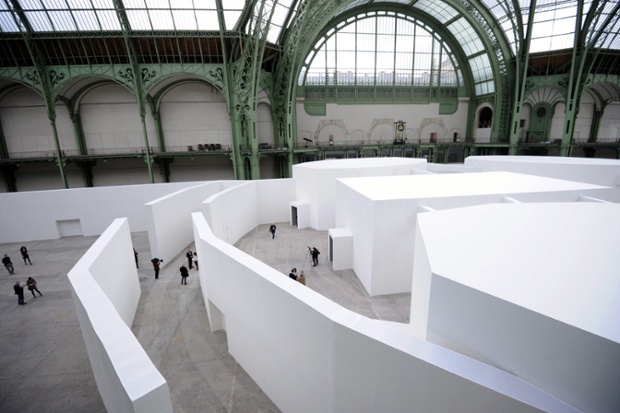Dublin’s Hugh Lane Gallery announces the opening of a new exhibition influenced by Blavatsky. Titled A Modern Panarion: Glimpses of Occultism in Dublin:
 |
AE's Theosophical murals at the lodge of the Theosophical Society in Dublin, 1895 |
This exhibition features contemporary artists whose works resonate with ideas central to the belief system of The Theosophical Society. The Society was founded in New York in 1875, espousing a doctrine synthesised from esoteric religious, philosophical, and scientific ideas and aspiring toward the formation of a universal community in which all religions, creeds, and races were equal. The popularity of Theosophy in the late-nineteenth and early-twentieth centuries was considerable, rapidly attracting a community of adherents worldwide from amongst the many disenchanted people who sought spiritual guidance and vital inspiration in an increasingly secular and industrialized world.
As one reviewer noted: The ideas posited by A Modern Panarion, then, are not so much that a Theosophical Society is alive and kicking in Irish contemporary art, but that the traces of ideas raised by the Theosophists have perhaps been assimilated or passed down via pop culture. A lot of the Society’s thoughts on religion and philosophy would eventually resurface in new guises over the course of the 20th century – perhaps most notably during the counter-cultural movements of the 1960s, and the science fiction of the 1970s. Through these third parties, connections can be drawn to the artists participating in the show.
The exhibition takes its name from a volume of Blavatsky articles issued soon after her death, A Modern Panarion. Its title comes from the Greek, meaning “Medicine Chest,” a famous work by the fourth century bishop of Salamis, Cyprus, Epiphanius, intended as a “stock of remedies to offset the poisons of heresy.”
The exhibition is curated by Padraic E. Moore, who has issued an accompanying publication To Seek Where Shadows Are that chronicles of the emergence of the Theosophical Society’s Dublin Lodge. A Modern Panarion: Glimpses of Occultism in Dublin will run from June 19 to September 7, 2014.


